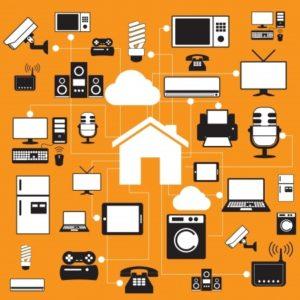 Earlier this week, IBM and AT&T announced a “global alliance agreement” to “develop solutions that help support the ‘Internet of Things.’” Under the terms of that deal, the two companies will reportedly co-mingle their respective cloud, security, and analytics technologies. The first customer targets are “midsize utilities” and city governments, which AT&T and IBM will train to better recognize patterns in data from traffic, first responders, social media, and other sources; from there, the client list will presumably expand to other industries. IBM assets involved in the deal include its Intelligent Operations Center, Maximo Asset Management, and other “advanced analytics capabilities,” in addition to the IBM MessageSight MQTT Appliance. AT&T brings devices, its M2M globally accessible network, and Global Subscriber Identity Module (SIM) to the party. The “Internet of Things” is only growing bigger: manufacturers will produce roughly 6.18 billion Internet-enabled devices this year, according to a recent report from IHS Technology. That’s a 6 percent increase from 2013 (when manufacturers produced around 5.82 billion devices); IHS defines “Internet enabled” devices as those that allow the user to connect to the Web in “some fashion” via built-in hardware. “The improved growth this year of the connected devices industry marks the return of higher production as manufacturers deliver all sorts of connectivity equipment to users,” Jagdish Rebello, Ph.D., senior director for information technology at IHS, wrote in a statement that accompanied the research firm’s numbers. “Given the voracious appetite of consumers for social media and their yen for always-on connectivity, it’s little surprise that makers will continue to turn out such devices to keep buyers engaged.” IBM and AT&T have chosen to focus their initial efforts on the public-infrastructure side of the “Internet of Things,” perhaps in an effort to counteract GE’s push to bring analytics to various industries. But it seems only a matter of time before a significant percentage of consumer hardware such as appliances and automobiles end up connected to the Web via sensors and software. The more companies that jump in and participate in these agreements and alliances, the faster that future will arrive (along with the inevitable privacy and security complaints). Image: Sergey Nivens/Shutterstock.com
Earlier this week, IBM and AT&T announced a “global alliance agreement” to “develop solutions that help support the ‘Internet of Things.’” Under the terms of that deal, the two companies will reportedly co-mingle their respective cloud, security, and analytics technologies. The first customer targets are “midsize utilities” and city governments, which AT&T and IBM will train to better recognize patterns in data from traffic, first responders, social media, and other sources; from there, the client list will presumably expand to other industries. IBM assets involved in the deal include its Intelligent Operations Center, Maximo Asset Management, and other “advanced analytics capabilities,” in addition to the IBM MessageSight MQTT Appliance. AT&T brings devices, its M2M globally accessible network, and Global Subscriber Identity Module (SIM) to the party. The “Internet of Things” is only growing bigger: manufacturers will produce roughly 6.18 billion Internet-enabled devices this year, according to a recent report from IHS Technology. That’s a 6 percent increase from 2013 (when manufacturers produced around 5.82 billion devices); IHS defines “Internet enabled” devices as those that allow the user to connect to the Web in “some fashion” via built-in hardware. “The improved growth this year of the connected devices industry marks the return of higher production as manufacturers deliver all sorts of connectivity equipment to users,” Jagdish Rebello, Ph.D., senior director for information technology at IHS, wrote in a statement that accompanied the research firm’s numbers. “Given the voracious appetite of consumers for social media and their yen for always-on connectivity, it’s little surprise that makers will continue to turn out such devices to keep buyers engaged.” IBM and AT&T have chosen to focus their initial efforts on the public-infrastructure side of the “Internet of Things,” perhaps in an effort to counteract GE’s push to bring analytics to various industries. But it seems only a matter of time before a significant percentage of consumer hardware such as appliances and automobiles end up connected to the Web via sensors and software. The more companies that jump in and participate in these agreements and alliances, the faster that future will arrive (along with the inevitable privacy and security complaints). Image: Sergey Nivens/Shutterstock.com With IBM and AT&T, Rush to ‘Internet of Things’ Intensifies
 Earlier this week, IBM and AT&T announced a “global alliance agreement” to “develop solutions that help support the ‘Internet of Things.’” Under the terms of that deal, the two companies will reportedly co-mingle their respective cloud, security, and analytics technologies. The first customer targets are “midsize utilities” and city governments, which AT&T and IBM will train to better recognize patterns in data from traffic, first responders, social media, and other sources; from there, the client list will presumably expand to other industries. IBM assets involved in the deal include its Intelligent Operations Center, Maximo Asset Management, and other “advanced analytics capabilities,” in addition to the IBM MessageSight MQTT Appliance. AT&T brings devices, its M2M globally accessible network, and Global Subscriber Identity Module (SIM) to the party. The “Internet of Things” is only growing bigger: manufacturers will produce roughly 6.18 billion Internet-enabled devices this year, according to a recent report from IHS Technology. That’s a 6 percent increase from 2013 (when manufacturers produced around 5.82 billion devices); IHS defines “Internet enabled” devices as those that allow the user to connect to the Web in “some fashion” via built-in hardware. “The improved growth this year of the connected devices industry marks the return of higher production as manufacturers deliver all sorts of connectivity equipment to users,” Jagdish Rebello, Ph.D., senior director for information technology at IHS, wrote in a statement that accompanied the research firm’s numbers. “Given the voracious appetite of consumers for social media and their yen for always-on connectivity, it’s little surprise that makers will continue to turn out such devices to keep buyers engaged.” IBM and AT&T have chosen to focus their initial efforts on the public-infrastructure side of the “Internet of Things,” perhaps in an effort to counteract GE’s push to bring analytics to various industries. But it seems only a matter of time before a significant percentage of consumer hardware such as appliances and automobiles end up connected to the Web via sensors and software. The more companies that jump in and participate in these agreements and alliances, the faster that future will arrive (along with the inevitable privacy and security complaints). Image: Sergey Nivens/Shutterstock.com
Earlier this week, IBM and AT&T announced a “global alliance agreement” to “develop solutions that help support the ‘Internet of Things.’” Under the terms of that deal, the two companies will reportedly co-mingle their respective cloud, security, and analytics technologies. The first customer targets are “midsize utilities” and city governments, which AT&T and IBM will train to better recognize patterns in data from traffic, first responders, social media, and other sources; from there, the client list will presumably expand to other industries. IBM assets involved in the deal include its Intelligent Operations Center, Maximo Asset Management, and other “advanced analytics capabilities,” in addition to the IBM MessageSight MQTT Appliance. AT&T brings devices, its M2M globally accessible network, and Global Subscriber Identity Module (SIM) to the party. The “Internet of Things” is only growing bigger: manufacturers will produce roughly 6.18 billion Internet-enabled devices this year, according to a recent report from IHS Technology. That’s a 6 percent increase from 2013 (when manufacturers produced around 5.82 billion devices); IHS defines “Internet enabled” devices as those that allow the user to connect to the Web in “some fashion” via built-in hardware. “The improved growth this year of the connected devices industry marks the return of higher production as manufacturers deliver all sorts of connectivity equipment to users,” Jagdish Rebello, Ph.D., senior director for information technology at IHS, wrote in a statement that accompanied the research firm’s numbers. “Given the voracious appetite of consumers for social media and their yen for always-on connectivity, it’s little surprise that makers will continue to turn out such devices to keep buyers engaged.” IBM and AT&T have chosen to focus their initial efforts on the public-infrastructure side of the “Internet of Things,” perhaps in an effort to counteract GE’s push to bring analytics to various industries. But it seems only a matter of time before a significant percentage of consumer hardware such as appliances and automobiles end up connected to the Web via sensors and software. The more companies that jump in and participate in these agreements and alliances, the faster that future will arrive (along with the inevitable privacy and security complaints). Image: Sergey Nivens/Shutterstock.com 